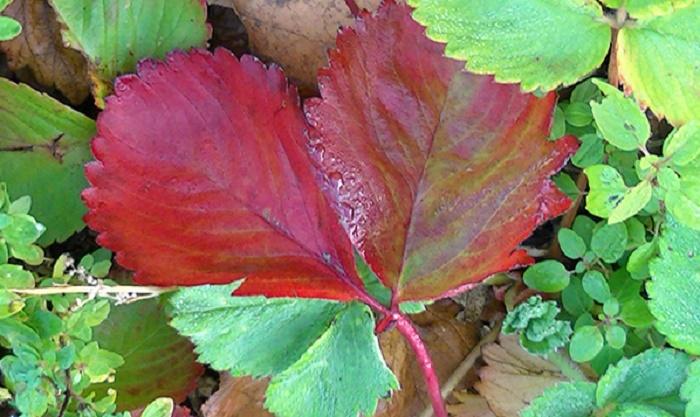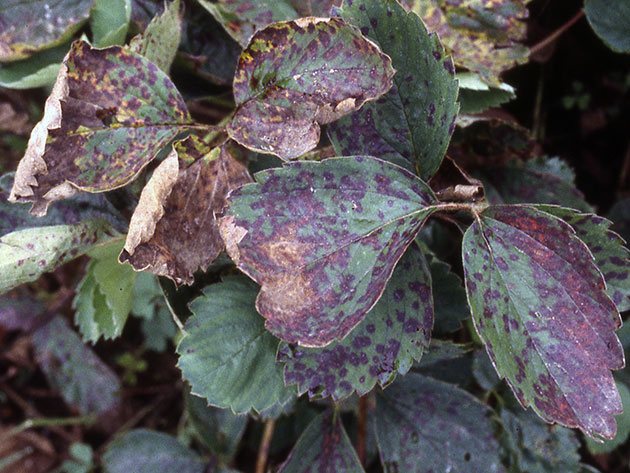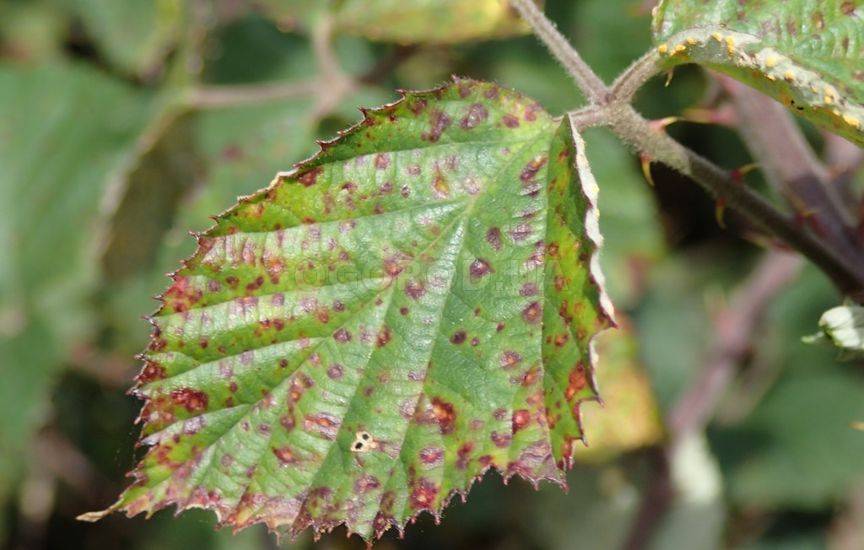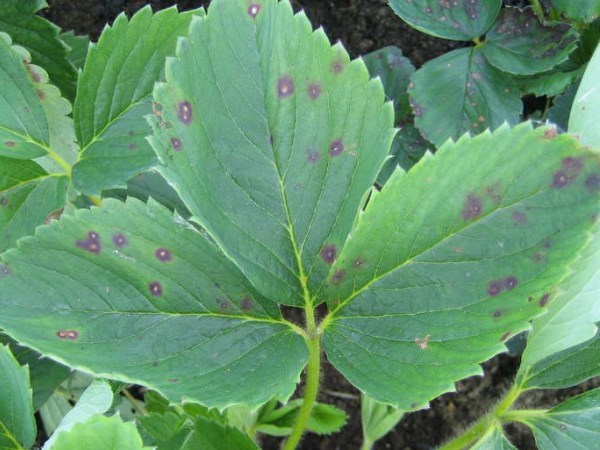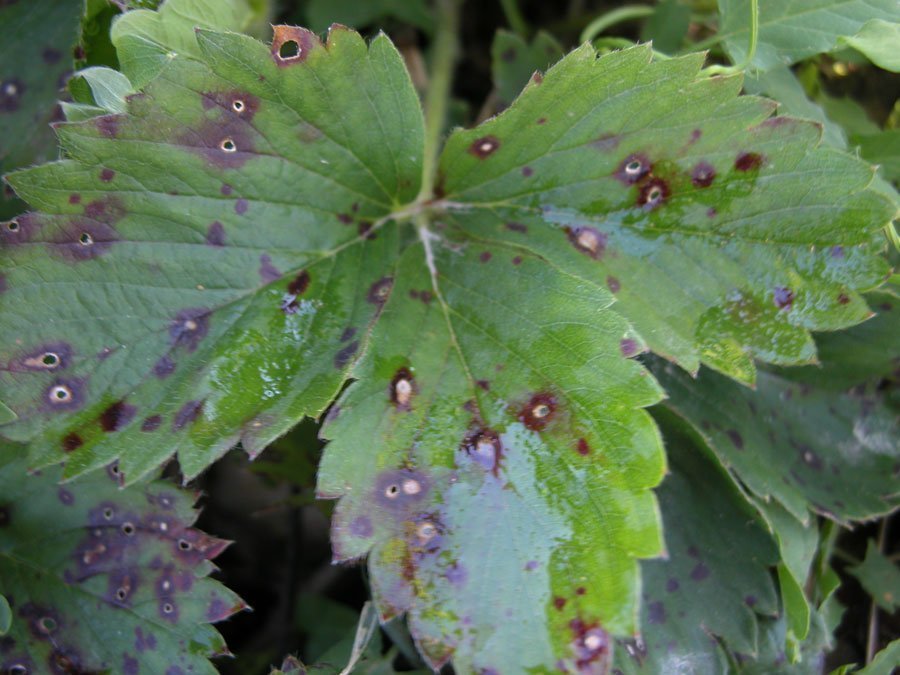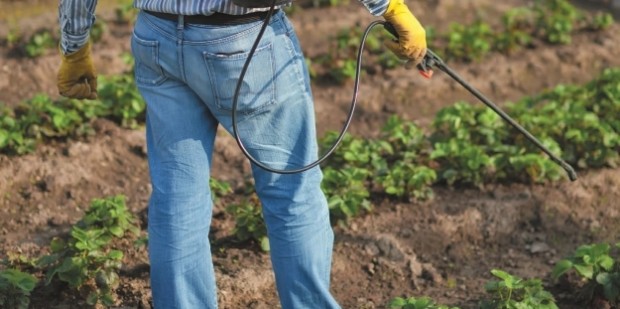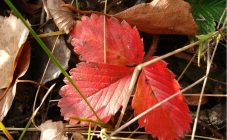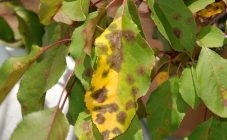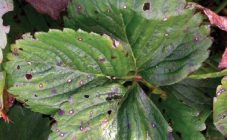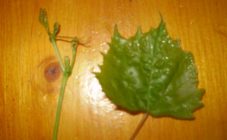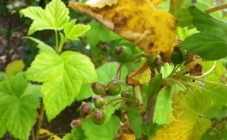Content:
Usually, strawberry leaves turn red when autumn begins. In August or September, they turn purple and dry out. This speaks of a natural process. However, if this happened as soon as spring began, or in the summer months, it is worth sounding the alarm. The fact is that a leaf is an indicator of the state of culture. The appearance of the foliage and its color determines the health of the plant. It is important for a gardener to know why the leaves of strawberries turn red, what to do with this process, how to treat the berry, and how else can the foliage change color.
Strawberry treatment rules
Garden strawberries (this is the official name for strawberries) need constant care. A special place in agricultural technology is occupied by the treatment of diseases and the control of pests of the berry bush. Only a culture that is given time has excellent fruiting.
General rules for the treatment of diseases and pest control consist of the following points:
- As soon as the snow melts and the soil begins to warm up, the gardener waters the garden with water at a temperature of at least 55 degrees. Boiling water helps to get rid of pests and bacteria. It is recommended to prepare a hot manganese solution. So the soil will be better disinfected. Processing with a hot solution of copper sulfate is allowed. The agent in the amount of 10 grams is dissolved in a 10-liter bucket of boiling water. You can do without boiling water. Then the strawberry bed is watered with Bordeaux liquid (3%).
- Dried or damaged leaves are removed throughout the season.
- Aromatic plants are planted next to the strawberries. Among the popular ones: marigolds, calendula. They will scare away pests.
- Diseases are treated with different drugs. For example, wilting can be defeated with the biological product Trichoderma verde. Fruit rot will go away if you transplant strawberries away from the area with raspberries, spray before flowering with either ash infusion, or mustard infusion with garlic, or biological fungicide Alirin B.
- With an invasion of a transparent mite, the culture is treated with high temperatures. Cover the entire strawberry patch on a very hot day with plastic wrap. A thermometer is placed there. As soon as it reaches +60 degrees, the film can be removed. Next, each bush is cut off, leaving only a small petiole. The foliage is burned.
Strawberry leaves turn red
If the crop leaves suddenly turn red in spring or summer, there may be several reasons.
Among the most common:
- The berry is lacking in nutrients;
- The soil is too acidic;
- A fungus settled on the plant, which led to brown spot.
Lack of nutrients
Usually, reddening of the foliage indicates nitrogen starvation. In this case, it is worth feeding the plant with nitroammophos (another name for azofosk), ammonium nitrate.
Azofoska is introduced in spring and summer. The month of June is suitable. It is allowed to embed granules in the soil or dissolve them in water. If the first method is chosen, then 25-35 grams should be scattered per square meter of soil. facilities. After the garden bed is watered.You can dissolve a matchbox of nitroammophoska granules in a 10 liter bucket of water.
A good time for ammonium nitrate is the first half of the season. It is scattered into shallow trenches between the bushes. Dosage - 10 gr. one square meter.
Another reason for the sudden redness of leaves is a lack of phosphorus. In this case, superphosphate is added. They can process the garden bed three times per season. Fertilizer interacts well with organic matter. 35 gr. superphosphate is mixed with a glass of fly ash and a solution of cow dung. A solution of cow dung is prepared from 7 liters of water and 1 liter of manure. Such feeding will not only provide the culture with phosphorus, but also make the fruits much sweeter.
Too acidic soil
The foliage may turn red due to the increased acidity of the soil. The culture normally develops only in the ground, the pH of which is 6-6.5 pH. Such soil is considered slightly acidic, neutral. To lower the acidity of the soil, dolomite flour and ash are embedded in it. About one glass per square meter.
Brown spot
The causative agent of the disease is the fungus Marssonina. Signs of brown spot appear in spring and summer both on leaf blades and on berries. The foliage can become covered with spots, the color of which is red, brick-brown, dark brown. The spots increase in size every day. Brown foci are visible on berries, crop stems. Similar symptoms of brown spot are observed in the cucumber garden. Cucumber often suffers from this disease.
Strawberry brown spot treatment involves both modern methods and folk.
If there is a suspicion of a fungal infection, strawberries should be treated with a manganese solution, as well as Bordeaux liquid (3%). Instead of these funds, you can take copper oxychloride. The disease is treated with systemic contact fungicides Oxyhom, Skor.
The popular method of combating brown spot is the preparation of an invigorating cocktail, harmful to the Marssonina mushrooms. Take a 10-liter bucket of warm water. 5 gr is added there. potassium permanganate, 4 teaspoons of soda, 10 ml of iodine, 25 gr. laundry soap. Everything gets mixed up. Each leaf is sprayed with a solution. This remedy is good because it allows you to fight spotting at any time of the growing season.
If the disease has brown spot on strawberries, then the methods of control also include:
- Removal and burning of damaged leaves.
- Planting bushes is not too dense.
- Maintaining cleanliness in the garden.
- Treatment with a biological product Fitosporin. It increases the resistance of the culture, has a beneficial effect on growth, and effectively fights bacteria and fungi.
- Watering should be timely, but strawberries should not be poured. Like cucumber, garden strawberries can pick up brown spot due to dampness and high humidity.
Strawberries have brown spots
If strawberries develop brown spots at the end of summer, then the plant may have developed angular spotting. Other names for the disease: brown spot, bacterial wilting. It differs from brown in both features and time of appearance. Brown spotting is observed at the beginning of the season, and angular spotting at the end. It is because of this that summer residents do not take the disease seriously, believing that the leaves have changed color due to the approach of autumn.
Angular spotting appears on the leaves as brown spots that show through when viewed through the light. The lower part of the leaf plate can give off light moisture in damaged areas. A dark border can be seen on the bottom of the sheet. Why and how does the disease occur? It is caused by the bacterium X. Fragariae.She loves water. Develops in high humidity. It can penetrate into the plant through open areas, kinks, wounds. In autumn, bacteria-infected leaves can dry out. The causative agent hibernates on them.
If brown spots appear on strawberries, how are they treated? First you need to remove all diseased bushes, weeds. As soon as the young foliage begins to grow, it should be treated with copper oxychlorate. The disease can disappear after treatment with strong fungicides, including: Skor, Ridomil Gold, etc.
The edges of the strawberry leaves are brown
If the edges of the strawberry leaves change color to dark, turn brown, they dry out. The edge, and then the entire plate may dry out due to pests. There is a high probability of the appearance of whitefly, strawberry leaf beetle, weevil on the plantation. Insects drink the sap of the plant, leaving it exhausted. This state of affairs negatively affects the harvest.
Pest control consists of the application of insecticides.
Among the suitable ones:
- Fufanon;
- Intavir;
- Karbofos;
- Rovikurt;
- Aktara;
- Confidor, etc.
Funds are used according to the instructions.
The popular way to remove harmful guests is to prepare a soap-ash solution. A whole bar of laundry soap is diluted in a bucket of water. Several glasses of ash are added there. Everything gets mixed up. Bushes are sprayed with this potion.
Red spots on the leaves
If a red string of spots appears on the leaves, it could be a red spot. The disease is dangerous. It leads to the death of the plant. The fungus manifests itself as small reddish-brown spots on the leaf plate. Or a dot appears first. Then the red spot and dot grow. The leaf turns red completely.
The gardener must remove all damaged leaves, thin out the garden bed, weed it. It must be well ventilated. Further treatment with fungicides is supposed, among the popular ones: Ridomil, Skor, Topaz. Copper-based products help combat red spotting.
Rusty stains on the leaves
One of the common diseases of garden strawberries is rust. Its first sign is specks on the foliage. Their color is similar to a rusty, dark carrot. The spots take the form of bulges. Fungal disease easily passes from one plant to another. Leaves begin to rust on all bushes in the garden.
Dark spots on the leaves
Another disease that is clearly visible on the leaves is white spot. Its signs are small dark spots. At first, their size is about 1 mm. Then they begin to grow. Gradually increasing, the center of the spot turns out to be whitish. A barely noticeable plaque appears on it. The fungus that causes white spot, penetrates from the leaves to the stems, flowers. If you do not take action in time, then the leaves are severely depleted, holes are formed on them. As a result, the plant dies off.
Experienced gardeners spray the bushes with Falcon, Zineb, Bordeaux liquid. It is important that both sides of the sheet are processed.
Burgundy spots on the leaves
If on the leaf plate of garden strawberries there are peculiar burgundy inlets, it means that the plant has overcome anthracnose. This is a disease that is also caused by a fungus. The attack goes not only on the leaves, but also on the entire ground part of the bush. Burgundy spots are quite noticeable on the mustache, petioles, fruits.As a result, the fruits rot and dry out. The whole bush dries out.
Suitable preparations for the destruction of fungus:
- Cumulus;
- Anthracol;
- Metaxil.
Prevention measures
So that the strawberries do not change the color of the leaves, suspicious spots do not form on them, they do not begin to dry, it is worth paying attention to the prevention of diseases and pests.
To do this, it is important to follow a number of recommendations:
- Young bushes for planting on the garden bed are selected only healthy, without damage and signs of disease.
- Marigolds, decorative garlic, nasturtiums are planted in the garden next to strawberries. Their aroma repels pests, protects against fungal diseases.
- Transplant strawberries to a new bed every 3-5 years.
- When planting, the soil is well treated with a manganese solution and iodine solution.
- In early spring, you should spray the strawberries with boiling water, as well as Bordeaux liquid.
- The strawberry bed should be well ventilated. The bushes are not planted close to each other. The ideal distance between plants is 30-45 cm.
- To prevent the attack of insect pests, the garden bed is weeded and loosened in time.
- In autumn, the strawberry bed is treated with iron sulfate.
Red spots appear on strawberries quite often. The gardener must notice them in time and determine what they mean. Then it will not be difficult to cure the plant.
